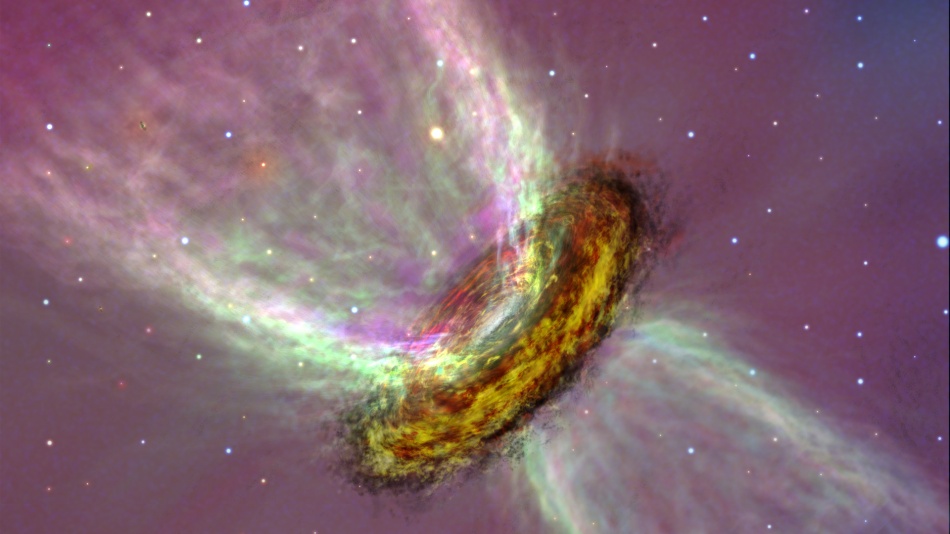20140304
Team Member
Tue, 2014-04-01 19:09 — adminv- Tomoya HIROTA
- Assistant Professor, Mizusawa VLBI Observatory, NAOJ
- Mi Kyoung Kim
- Postdoctoral Fellow, Korea Astronomy and Space Science Institute
- Yasutaka KURONO
- Postdoctoral Fellow, Joint ALMA Observatory / The Chile Observatory, NAOJ
Terms and References
Thu, 2014-03-27 20:11 — adminvTerms
- VERA
- VERA (VLBI Exploration of Radio Astrometry) is the network of four 20-m radio telescopes located in Japan (Mizusawa, Iriki, Ogasawara, Ishigaki.). The main goal of the VERA project is to construct the detailed map of our Milky Way Galaxy by measuring the precise position of many celestial objects. In order to measure the distances of those objects, the projects have observed a number of maser emission. VERA measured the
precise distance to Orion KL. - ALMA
Future outlook
Thu, 2014-03-27 20:02 — adminvThe team wants to learn the more detailed structure and dynamics of Source I by using ALMA with higher resolution and sensitivity at higher frequency. Such observations should reveal the mysteries of the evolution of Source I. Hirota said, “It is also important that the physical conditions of a circumstellar disk depend on the mass of the central protostar. The circumstellar disk around a massive star is heated up to 3000 degrees Celsius. Dust that is the material for planets should melt away at such high temperatures. I wonder if planets can form under such condition.
Results
Thu, 2014-03-27 19:58 — adminvThe team detected the two lines from the hot water molecules and clearly revealed the distribution. The distribution of the emissions from the 1700 degrees Celsius water molecules was similar to that of the jet observed via the SiO maser. The team interpreted this to mean that water molecules in the jet from Source I are emitting the radio maser.
Observation
Thu, 2014-03-27 19:10 — adminvThe research team selected the nearest region of massive star-formation, Orion KL, for the ALMA observation. Stars with 8 times more mass than the Sun are forming in Orion KL. The distance to Orion KL is estimated to be about 1400 light-years, and it has been well studied since its discovery in 1967 because of its vicinity.
Background
Thu, 2014-03-27 19:03 — adminvThanks to recent intensive studies, the formation process of low to intermediate mass stars is now well understood. On the other hand, we know little about how massive stars form. Low and intermediate mass stars are formed by mass accretion from a circumstellar disk. Is this process the same for massive stars? Massive stars could form via stellar collisions as another theory suggests. We cannot answer such a simple question.
Abstract "Massive Stars Formed in a Gas Disk? Discovery of a Hot Circumstellar Disk around a Massive Protostar"
Thu, 2014-03-27 18:12 — adminv謝辞
Fri, 2014-02-28 22:52 — adminv本研究は科学研究費補助金(21224002, 24540242, 24684011, 25108005, 25120007)、ALMA共同利用PIサポートプログラム(NAOJ-ALMA-0006)による補助を受けて行われました。
本研究は ”Hot Molecular Circumstellar Disk around the Massive Protostar Orion Source I” というタイトルで、The Astrophysical Journal Letters 782号、L28(2014年2月20日発行)に出版されました。
今回の研究を行ったチームのメンバーは、以下の通りです。
- 廣田朋也(国立天文台水沢VLBI観測所 助教)
- 金美京 (韓国天文研究院 研究員)
- 黒野泰隆(国立天文台チリ観測所・合同アルマ観測所 研究員)
- 本間希樹(国立天文台水沢VLBI観測所 准教授)
